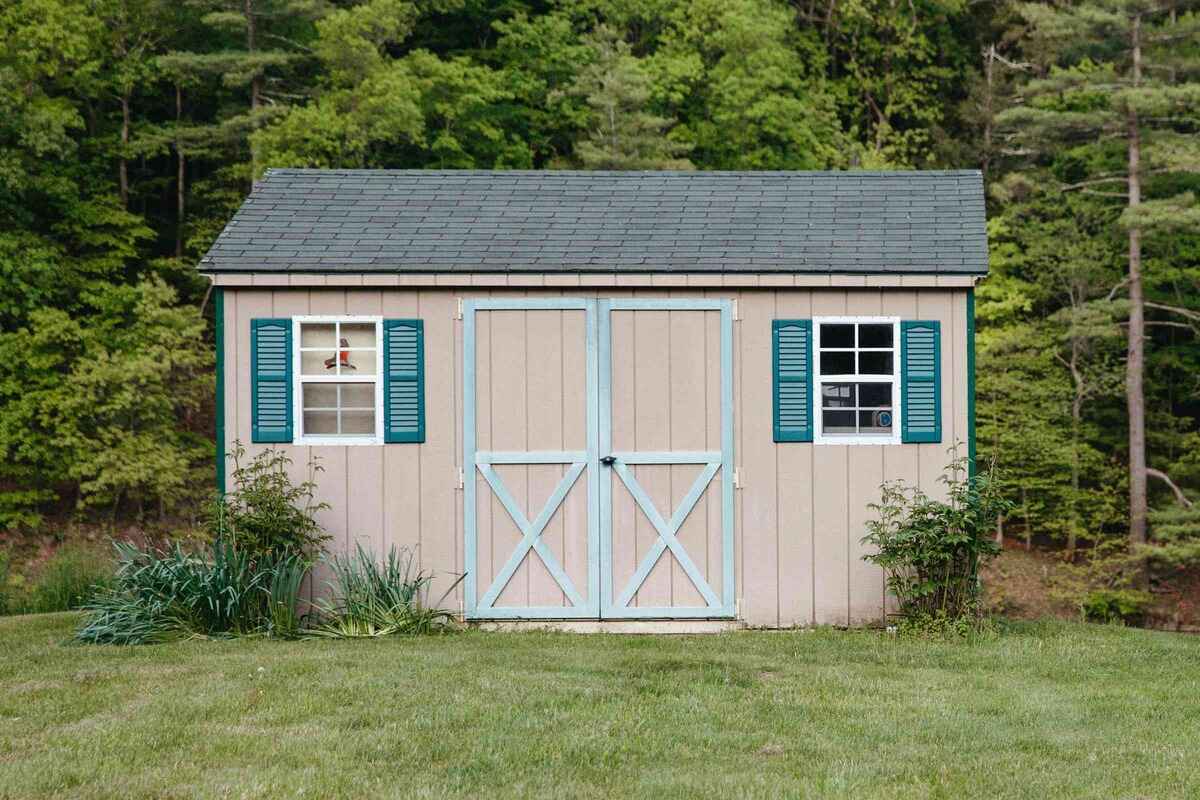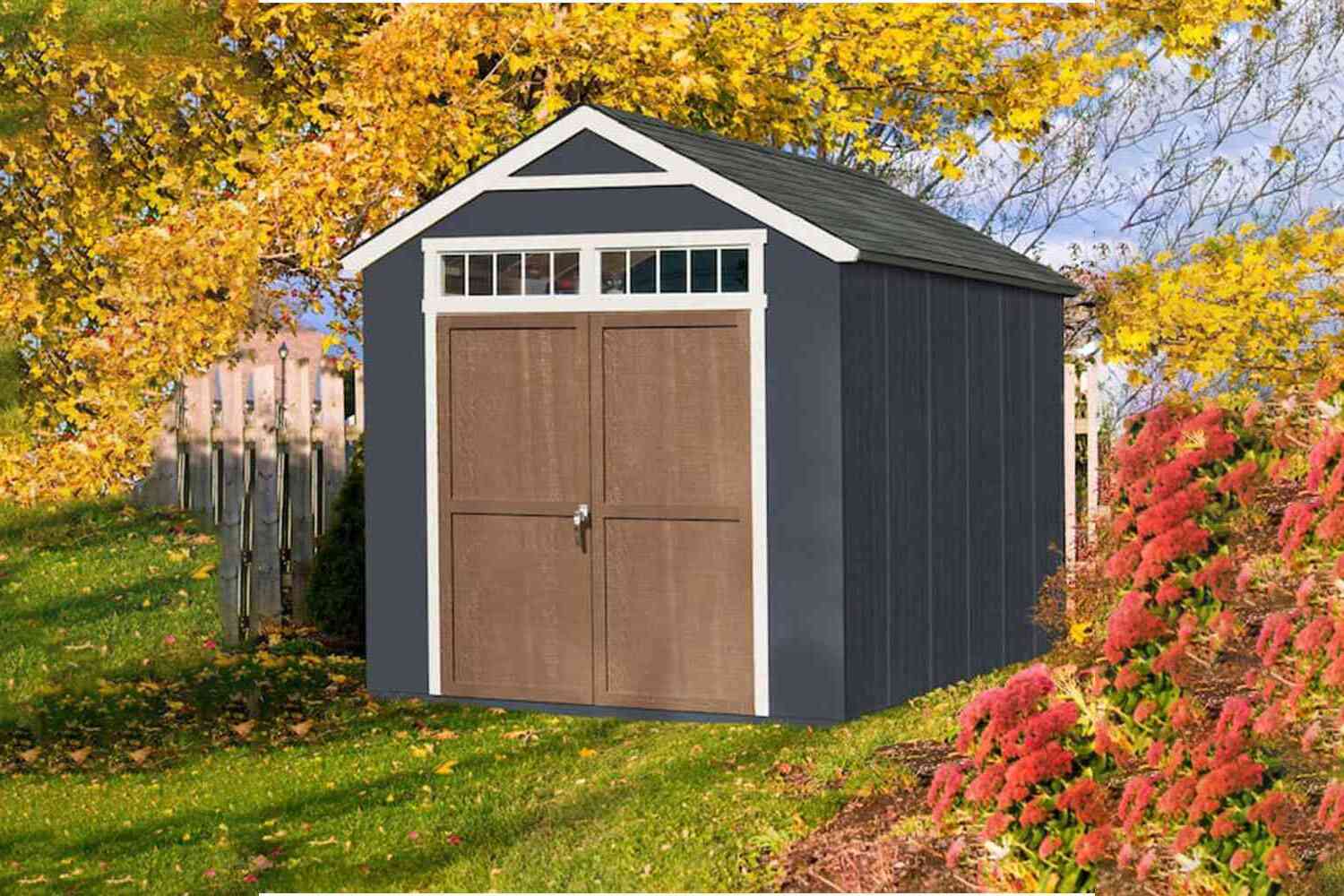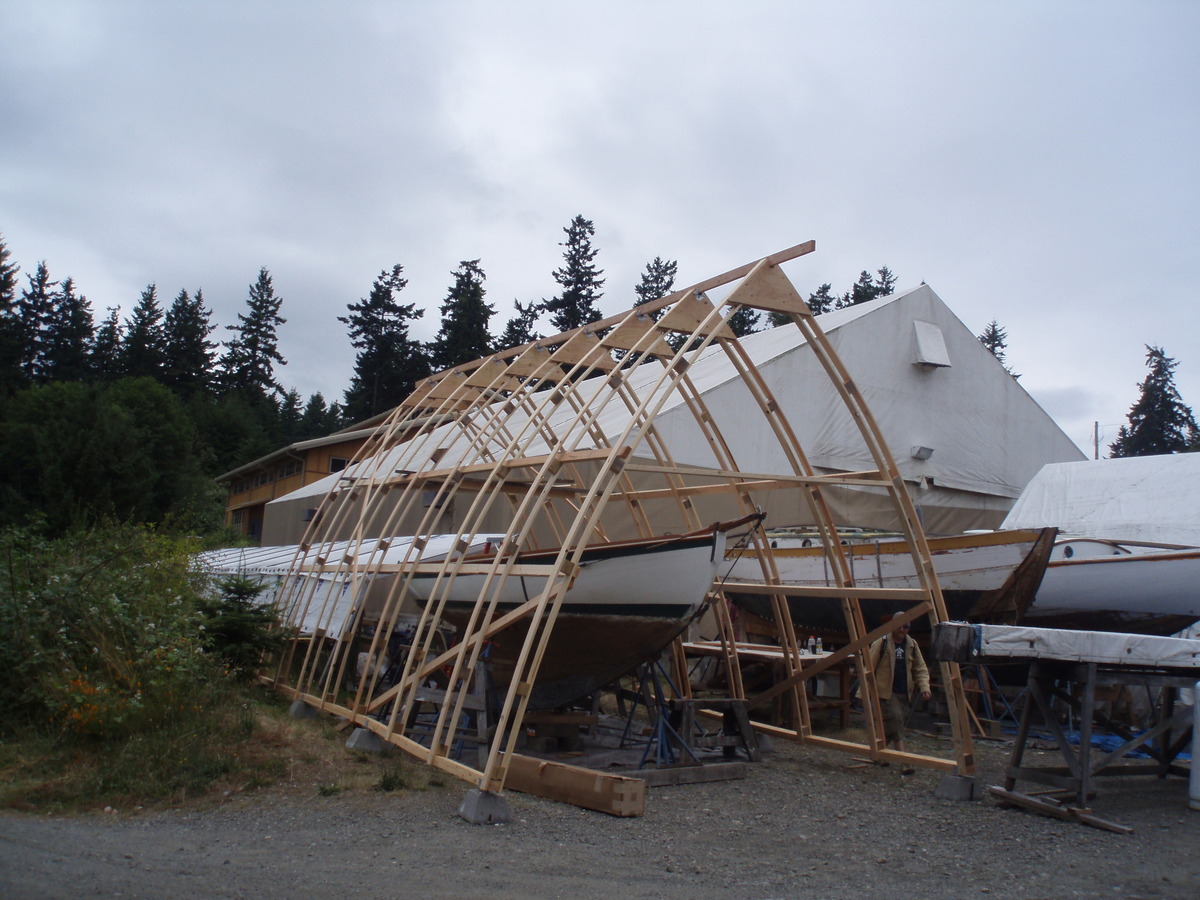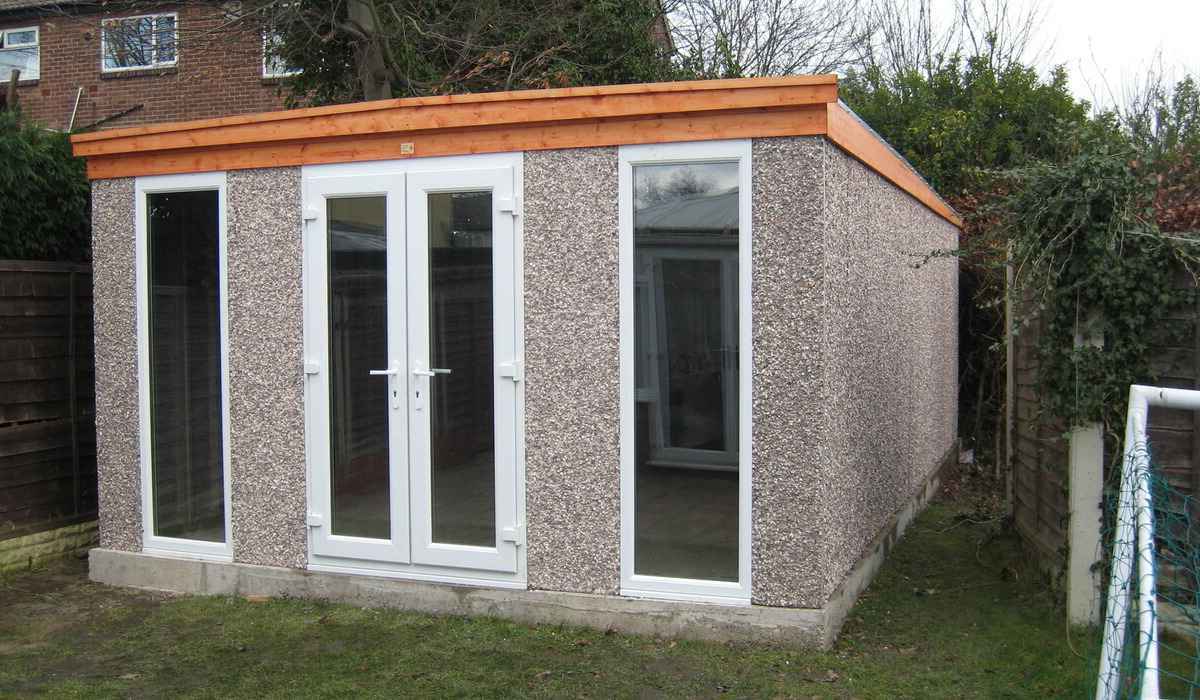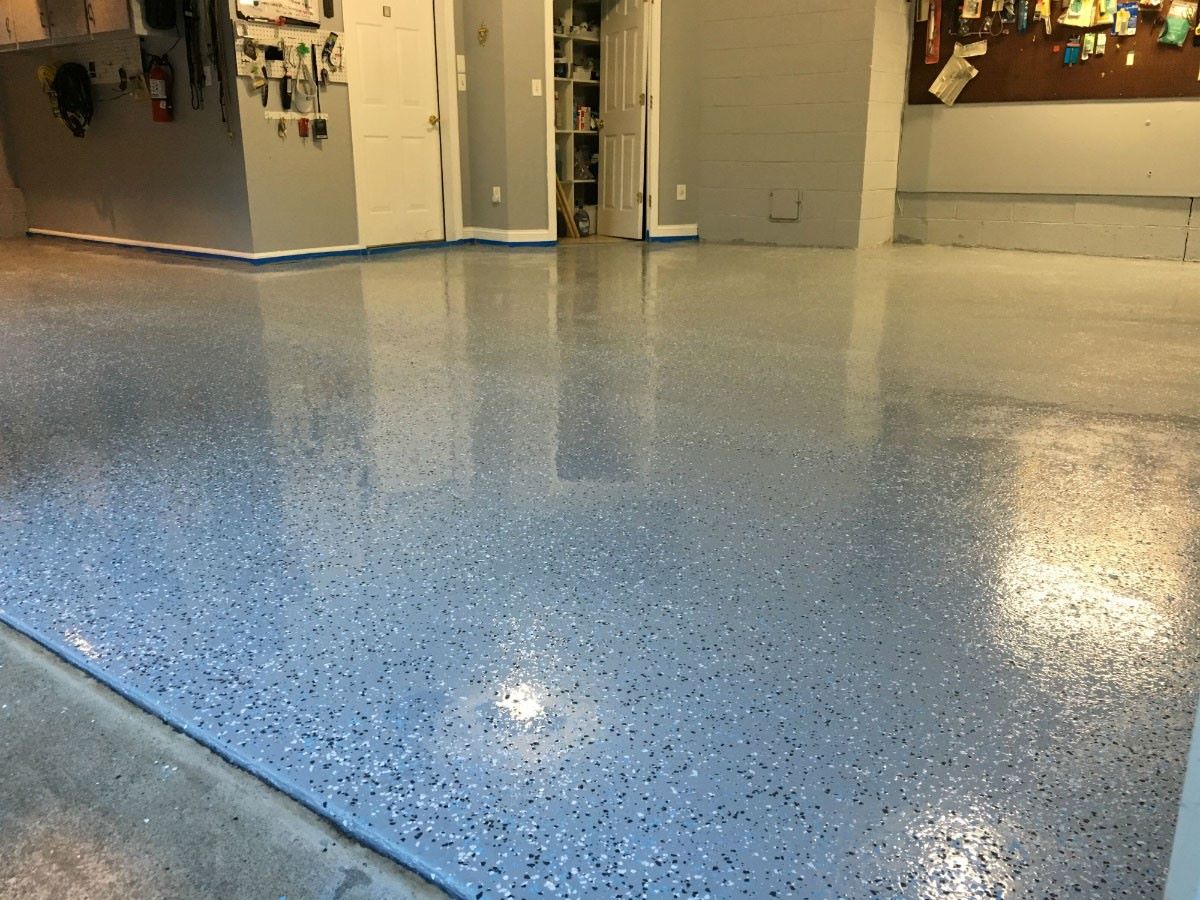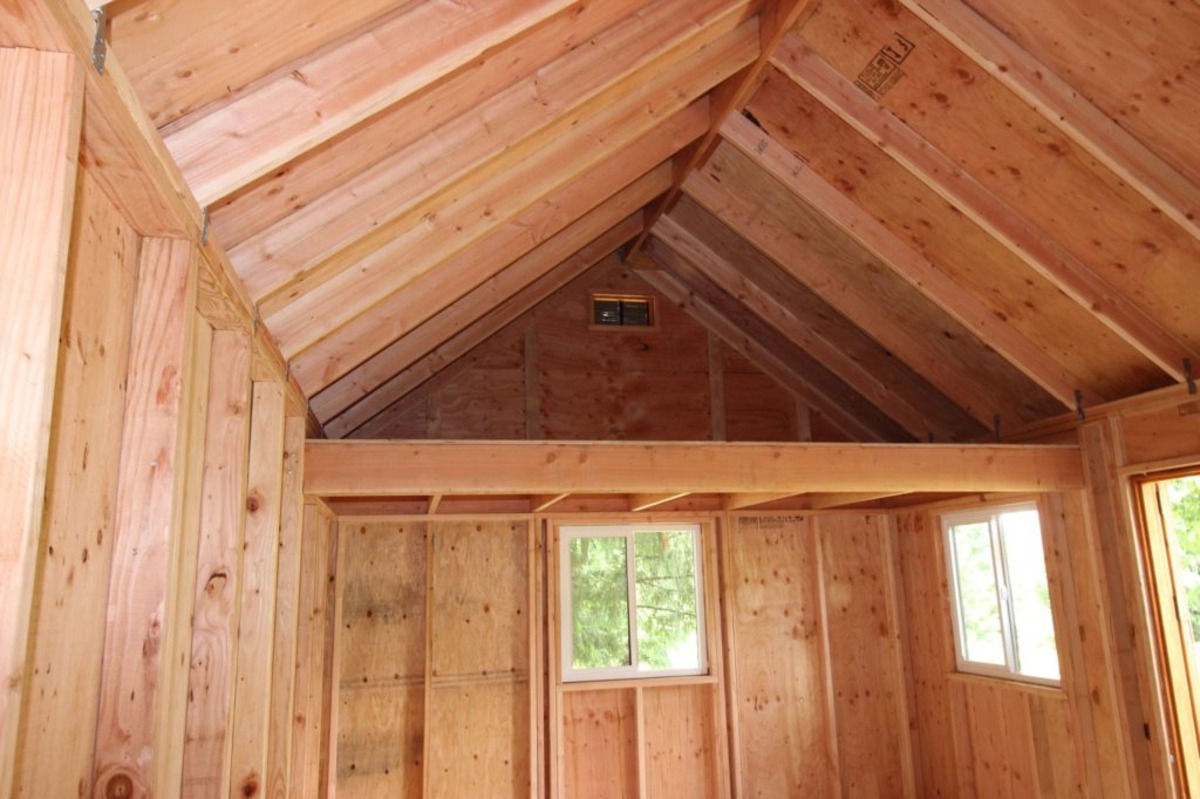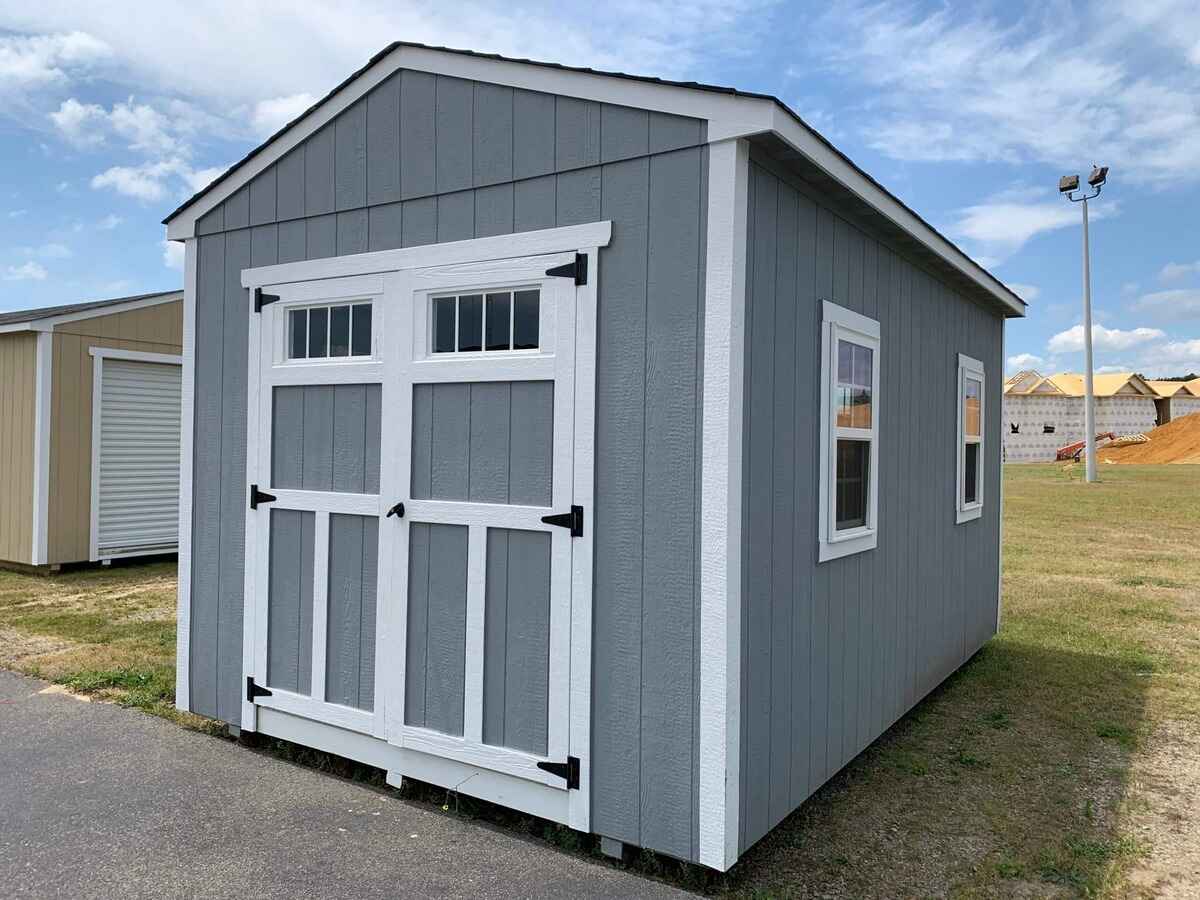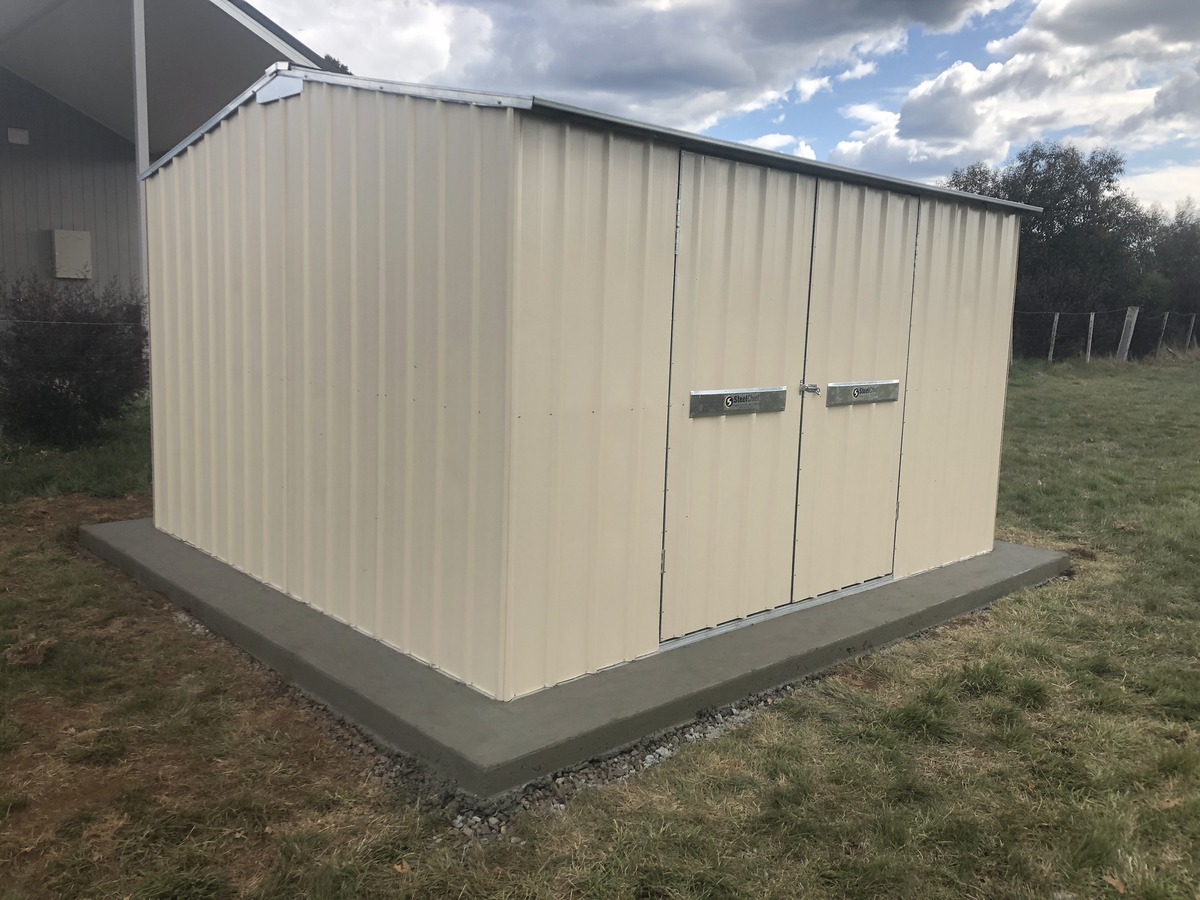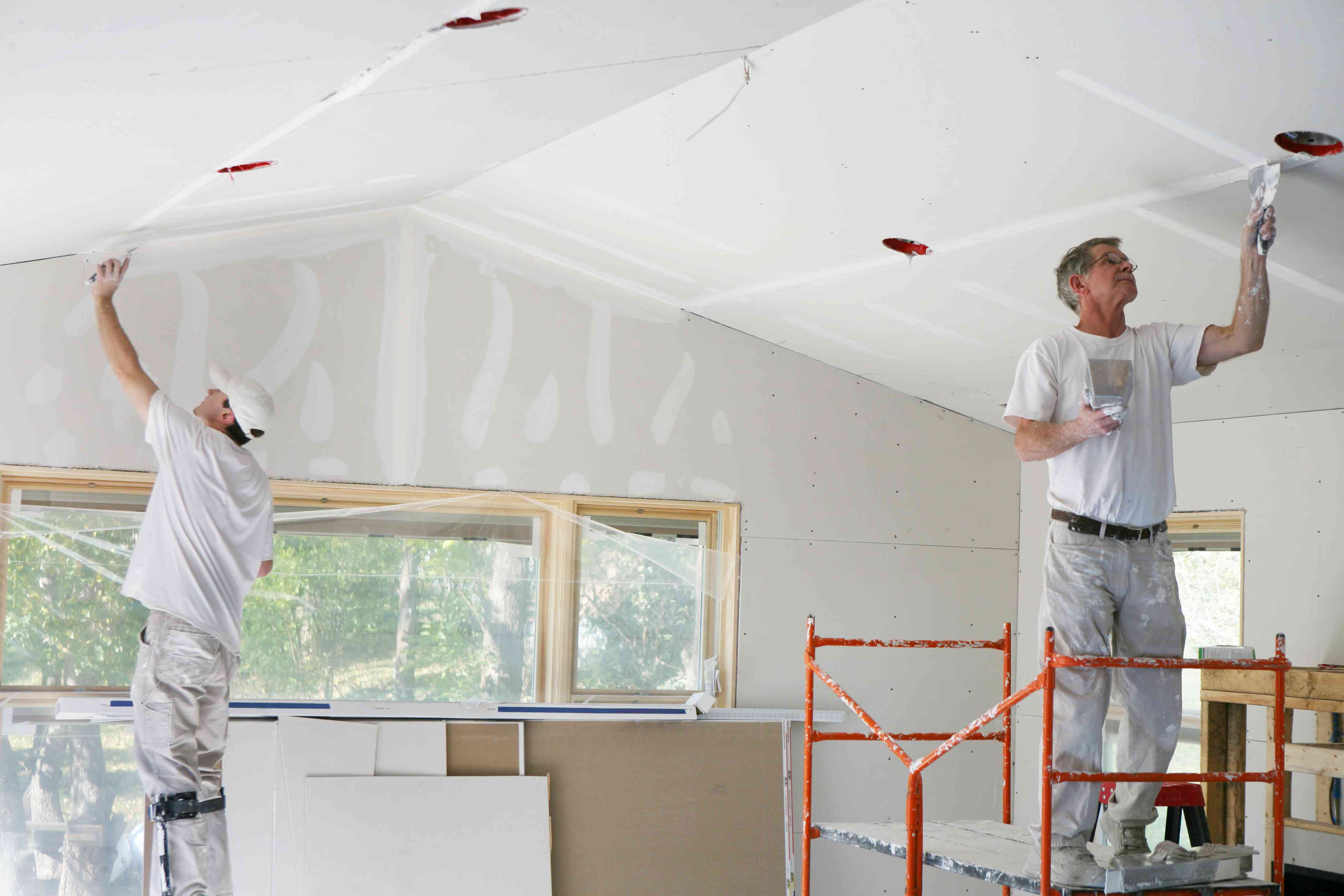Home>Create & Decorate>DIY & Crafts>How To Build A Shed Floor
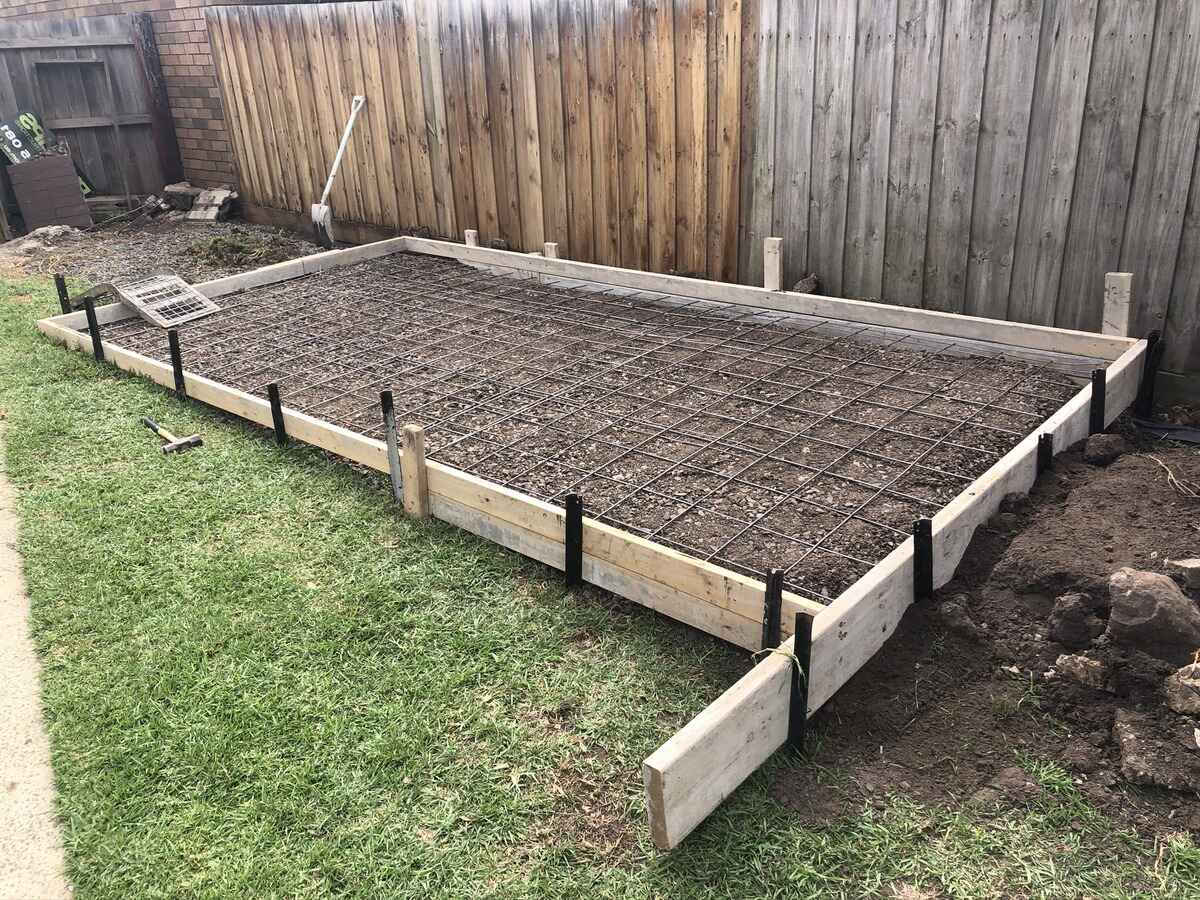

DIY & Crafts
How To Build A Shed Floor
Modified: May 30, 2024

Senior Editor in Create & Decorate, Kathryn combines traditional craftsmanship with contemporary trends. Her background in textile design and commitment to sustainable crafts inspire both content and community.
Learn how to build a sturdy shed floor with our DIY & Crafts guide. Get step-by-step instructions and expert tips for a successful project.
(Many of the links in this article redirect to a specific reviewed product. Your purchase of these products through affiliate links helps to generate commission for Twigandthistle.com, at no extra cost. Learn more)
Introduction
Building a shed can be a rewarding and practical DIY project that adds valuable storage space to your property. One of the essential components of constructing a sturdy and durable shed is the floor. The shed floor serves as the foundation for the entire structure, providing stability and support for the walls and roof. Whether you're a seasoned DIY enthusiast or a beginner looking to embark on your first shed-building adventure, understanding how to build a shed floor is a crucial first step.
A well-constructed shed floor not only ensures the structural integrity of the entire shed but also provides a level and stable surface for storing tools, equipment, and other items. By following a systematic approach and using the right materials and tools, you can create a solid and long-lasting shed floor that will withstand the test of time.
In this comprehensive guide, we will walk you through the step-by-step process of building a shed floor from start to finish. From gathering the necessary materials and tools to laying the final plywood sheets, each stage of the construction process will be explained in detail. Whether you're planning to build a small storage shed or a larger workshop, the principles outlined in this guide can be adapted to suit your specific needs.
By the end of this tutorial, you will have the knowledge and confidence to tackle the construction of a shed floor with precision and skill. So, roll up your sleeves, gather your tools, and let's dive into the exciting world of shed building as we embark on the journey of creating a solid and reliable foundation for your outdoor storage space.
Read more: How To Build A Shed Floor On Skids
Step 1: Gather Materials and Tools
Before diving into the construction of a shed floor, it's crucial to gather all the necessary materials and tools to ensure a smooth and efficient building process. Here's a comprehensive list of items you'll need to get started:
Materials:
- Pressure-Treated Lumber: This will serve as the primary material for constructing the floor frame and joists. Opting for pressure-treated lumber is essential as it offers resistance to decay and termite infestation, ensuring the longevity of your shed floor.
- Plywood Sheets: These will be used to create the surface of the shed floor, providing a sturdy and level base for your storage needs.
- Concrete Blocks or Gravel: Depending on the ground conditions, you'll need either concrete blocks or gravel to create a stable and level foundation for the shed floor.
- Galvanized Nails or Screws: These will be used to secure the various components of the shed floor, ensuring structural integrity.
- Joist Hangers: Essential for attaching the floor joists to the frame, joist hangers provide additional support and stability.
- Moisture Barrier: A moisture barrier, such as a heavy-duty plastic sheet, will help prevent moisture from seeping into the shed floor, protecting it from potential water damage.
Tools:
- Tape Measure: An essential tool for accurately measuring the dimensions of the shed floor area and the materials.
- Circular Saw: Used for cutting the lumber and plywood sheets to the required sizes.
- Hammer or Screw Gun: Depending on the fasteners you choose, a hammer or screw gun will be necessary for securing the components of the shed floor.
- Level: To ensure that the shed floor is even and free of any slopes or uneven surfaces.
- Work Gloves and Safety Goggles: These are essential for personal safety during the construction process.
- Pencil and Marking Tools: For marking measurements and guidelines on the materials.
By gathering these materials and tools, you'll be well-prepared to embark on the next steps of building a solid and reliable shed floor. With everything in hand, you're ready to move on to the exciting phase of measuring and marking the shed floor area.
Now that you have all the necessary materials and tools at your disposal, it's time to move on to the next step: measuring and marking the shed floor area.
Step 2: Measure and Mark the Shed Floor Area
Before diving into the physical construction of the shed floor, it's crucial to start with precise measurements and accurate markings. This initial step sets the foundation for the entire building process, ensuring that the shed floor will fit the designated area and align with your specific requirements.
Begin by using a tape measure to carefully determine the dimensions of the shed floor area. Whether you're working with an existing concrete pad or preparing the ground from scratch, accurate measurements are essential. Take note of any irregularities in the ground, such as slopes or uneven surfaces, as these will need to be addressed during the construction process.
Once the measurements are recorded, use marking tools such as a pencil or chalk to outline the exact boundaries of the shed floor area. This step is crucial for visualizing the layout and ensuring that the floor frame will be positioned accurately.
In addition to marking the perimeter of the shed floor, it's important to identify the locations where support beams or additional reinforcements may be required. For example, if your shed will house heavy equipment or machinery, strategic placement of support beams within the floor frame can provide enhanced stability and load-bearing capacity.
During the marking process, it's beneficial to double-check the measurements and ensure that the layout aligns with your initial plans. Taking the time to meticulously measure and mark the shed floor area will contribute to the overall precision and quality of the construction project.
Furthermore, if the ground surface is not level, adjustments may be necessary to create a flat and stable foundation for the shed floor. This could involve using concrete blocks or gravel to raise the low points and create a uniform base for the floor frame.
By the end of this step, you should have a clear and well-defined outline of the shed floor area, complete with accurate measurements and strategic markings. This meticulous approach sets the stage for the subsequent stages of the construction process, ensuring that the shed floor will be seamlessly integrated into the designated space.
With the shed floor area accurately measured and marked, you're now ready to move on to the next step: preparing the ground for the construction of the floor frame.
Read more: How to Install Peel and Stick Flooring
Step 3: Prepare the Ground
Preparing the ground for the construction of the shed floor is a critical step that sets the stage for the structural integrity and longevity of the entire shed. The goal of this phase is to create a stable and level foundation that will support the floor frame and withstand the test of time. Whether you're working with a pre-existing concrete pad or starting from bare ground, the following steps will guide you through the process of preparing the ground with precision and care.
Clear the Area
Begin by clearing the designated shed floor area of any debris, rocks, or vegetation. It's essential to create a clean and unobstructed workspace to facilitate the subsequent steps of ground preparation. Use a rake or shovel to remove any surface-level obstacles and ensure that the ground is free from any potential obstructions that could impact the stability of the shed floor.
Level the Ground
Next, focus on leveling the ground to create a uniform surface for the shed floor. Utilize a long, straight board or a level to identify any high or low spots in the ground. If the ground is uneven, consider using a shovel to remove excess soil from high areas and redistribute it to fill in low areas. The goal is to achieve a flat and consistent base that will provide a solid foundation for the shed floor.
Create a Stable Base
Depending on the ground conditions, you may need to introduce additional support to create a stable base for the shed floor. If you're working with bare ground, consider using gravel to establish a well-draining and supportive foundation. Alternatively, if the ground is prone to moisture or unevenness, concrete blocks can be strategically positioned to provide a reliable base for the floor frame. Take the time to assess the specific needs of the ground and implement the appropriate measures to enhance stability and durability.
Read more: How To Build A Shed
Install a Moisture Barrier
To protect the shed floor from potential moisture damage, it's advisable to install a moisture barrier over the prepared ground. A heavy-duty plastic sheet or specialized moisture barrier material can be laid down to create a protective layer between the ground and the floor frame. This barrier serves as a safeguard against ground moisture, preventing it from seeping into the shed floor and compromising its structural integrity over time.
By meticulously preparing the ground according to these guidelines, you'll establish a solid and reliable foundation for the shed floor. This proactive approach sets the stage for the subsequent stages of floor construction, ensuring that the floor frame will be positioned on a stable and level base. With the ground meticulously prepared, you're now ready to embark on the exciting phase of building the floor frame, bringing you one step closer to the completion of your shed construction project.
Step 4: Build the Floor Frame
With the ground meticulously prepared, the next crucial step in building a shed floor is constructing the floor frame. The floor frame serves as the skeletal structure that supports the shed floor, providing stability and load-bearing capacity. By following a systematic approach and utilizing the appropriate materials, you can create a robust floor frame that forms the foundation of your shed.
Assemble the Lumber
Begin by assembling the pressure-treated lumber to form the perimeter of the floor frame. Cut the lumber to the required lengths based on the dimensions of the shed floor area. Use a circular saw to achieve precise cuts, ensuring that the pieces fit together seamlessly to create a sturdy frame. Secure the corners of the frame by joining the lumber using galvanized nails or screws, reinforcing the joints to enhance the overall strength of the structure.
Install Support Beams
Once the perimeter frame is in place, it's time to install the support beams within the interior of the frame. These support beams, also constructed from pressure-treated lumber, provide additional reinforcement and load-bearing capacity for the shed floor. Position the support beams at strategic intervals, ensuring that they align with the layout of the shed floor and contribute to its overall stability. Secure the support beams to the perimeter frame using joist hangers, ensuring a secure and durable connection.
Read more: How To Build Shed Foundation
Add Cross Bracing
To further enhance the structural integrity of the floor frame, consider adding cross bracing between the support beams. Cross bracing, typically created using additional lumber pieces, serves to minimize lateral movement and sway within the floor frame, creating a more rigid and stable structure. By strategically positioning cross braces, you can effectively distribute the load across the floor frame, reducing the risk of sagging or uneven weight distribution.
Verify Levelness
Throughout the assembly process, it's essential to verify the levelness of the floor frame using a reliable level. Ensuring that the frame is perfectly level and free from any slopes or irregularities is crucial for the successful installation of the shed floor. Make any necessary adjustments to achieve a level frame, taking into account the specific requirements of the shed floor area and the intended use of the structure.
By meticulously constructing the floor frame according to these guidelines, you'll establish a solid and reliable foundation for the shed floor. The completed floor frame serves as the structural backbone of the shed, setting the stage for the subsequent steps of installing the floor joists and laying the plywood sheets. With the floor frame in place, you're one step closer to bringing your shed construction project to fruition.
Step 5: Install the Floor Joists
With the floor frame securely in place, the next pivotal phase in building a shed floor involves the installation of the floor joists. Floor joists are essential components that provide crucial support for the plywood sheets, ensuring a stable and load-bearing surface for the shed floor. By meticulously installing the floor joists, you'll further reinforce the structural integrity of the shed floor, setting the stage for the final steps of completing the floor assembly.
Positioning the Floor Joists
Begin by positioning the floor joists within the interior of the floor frame, aligning them perpendicular to the support beams. The spacing between the floor joists is a critical consideration, as it directly impacts the strength and durability of the shed floor. Typically, floor joists are spaced at regular intervals, with the specific spacing determined by the anticipated load and the dimensions of the shed floor. Utilize a tape measure and marking tools to ensure precise and consistent spacing between the floor joists, maintaining uniformity throughout the floor assembly.
Read more: How To Build A Portable Shed
Securing the Floor Joists
Once the floor joists are positioned, secure them to the support beams using appropriate fasteners, such as galvanized nails or screws. The connection between the floor joists and the support beams is crucial for distributing the load evenly across the shed floor, minimizing the risk of sagging or structural compromise. Consider utilizing joist hangers to reinforce the attachment points, providing additional stability and support for the floor joists. By meticulously securing the floor joists, you'll create a robust framework that forms the foundation for the plywood sheets, ensuring a level and resilient shed floor.
Verifying Alignment and Levelness
Throughout the installation process, it's essential to verify the alignment and levelness of the floor joists to guarantee a uniform and stable shed floor. Utilize a reliable level to ensure that the floor joists are perfectly horizontal, minimizing the risk of uneven surfaces or potential structural issues. Additionally, double-check the alignment of the floor joists to guarantee that they are positioned accurately within the floor frame, contributing to the overall stability and load-bearing capacity of the shed floor.
By meticulously installing the floor joists according to these guidelines, you'll establish a solid and reliable foundation for the shed floor, setting the stage for the final phase of laying the plywood sheets. The completed installation of the floor joists represents a significant milestone in the construction of a sturdy and durable shed floor, bringing you one step closer to the realization of your shed building project.
Step 6: Lay the Plywood Sheets
Laying the plywood sheets is a pivotal phase in the construction of a shed floor, as it transforms the framework into a solid and functional surface. The plywood sheets serve as the top layer of the shed floor, providing a smooth and durable platform for storing tools, equipment, and other items. By meticulously laying the plywood sheets, you'll complete the foundational structure of the shed floor, bringing you one step closer to the realization of your shed building project.
Prepare the Plywood Sheets
Before laying the plywood sheets, it's essential to prepare them for installation. Start by measuring the dimensions of the shed floor area to determine the precise size of the plywood sheets needed. Using a circular saw, carefully cut the plywood sheets to fit the designated space, ensuring accurate and clean cuts. Additionally, inspect the plywood sheets for any defects or irregularities, ensuring that they are free from damage and suitable for use as the surface of the shed floor.
Read more: How to Install Heated Bathroom Floor
Positioning and Securing
Once the plywood sheets are prepared, position them atop the floor joists, aligning the edges with precision to create a seamless and uniform surface. Secure the plywood sheets to the floor joists using galvanized nails or screws, ensuring a strong and stable connection. The spacing of the fasteners is a critical consideration, as it directly impacts the overall integrity of the shed floor. By strategically placing the fasteners at regular intervals along the perimeter and interior of the plywood sheets, you'll create a secure and reliable attachment that minimizes the risk of shifting or movement.
Verify Stability and Smoothness
After securing the plywood sheets, verify the stability and smoothness of the shed floor surface. Utilize a level to ensure that the plywood sheets are even and free from any noticeable slopes or irregularities. Additionally, walk across the shed floor to assess its sturdiness and resilience, identifying any areas that may require additional reinforcement or adjustments. By meticulously verifying the stability and smoothness of the shed floor, you'll guarantee a high-quality and functional surface that meets your storage needs.
By meticulously laying the plywood sheets according to these guidelines, you'll complete the construction of a sturdy and reliable shed floor. The finished shed floor provides a solid foundation for your storage needs, offering a level and durable surface for organizing and safeguarding your belongings. With the plywood sheets in place, you've successfully reached a significant milestone in your shed building project, bringing you closer to the completion of your DIY endeavor.
Step 7: Add Finishing Touches
As the construction of the shed floor nears completion, adding finishing touches is a crucial step that enhances the functionality, durability, and visual appeal of the structure. These final details not only contribute to the overall aesthetics of the shed but also serve practical purposes, ensuring that the shed floor is well-equipped to withstand various environmental factors and usage requirements.
Apply a Protective Finish
To safeguard the plywood surface from moisture, wear, and tear, consider applying a protective finish or sealant. A high-quality wood sealant or outdoor-grade paint can provide a protective barrier, shielding the shed floor from the effects of weather exposure and foot traffic. This finishing touch not only enhances the longevity of the shed floor but also adds a polished and professional appearance to the structure.
Read more: How To Build An Office Shed
Install Edge Trim
Adding edge trim around the perimeter of the shed floor offers multiple benefits. The trim serves as a protective barrier, preventing water infiltration and minimizing the risk of edge damage. Additionally, it creates a neat and finished look, enhancing the overall aesthetics of the shed floor. Whether opting for metal, plastic, or pressure-treated wood trim, this detail adds a touch of refinement while reinforcing the structural integrity of the shed floor.
Implement Ventilation
Incorporating ventilation elements, such as small vents or gaps along the perimeter of the shed floor, promotes air circulation and minimizes the buildup of moisture. Adequate ventilation is essential for preventing condensation and maintaining the integrity of the shed floor, particularly in humid or damp environments. By integrating ventilation as a finishing touch, you'll create a more resilient and long-lasting shed floor.
Add Traction and Safety Features
For sheds used to store tools, equipment, or machinery, incorporating traction and safety features is paramount. Consider applying non-slip coatings or adding anti-slip mats to areas where traction is essential. Additionally, installing safety signage or markings can enhance awareness and promote safe usage of the shed floor, especially in work environments. These thoughtful additions prioritize safety and usability, making the shed floor a secure and functional space.
By meticulously adding these finishing touches, you'll elevate the shed floor from a basic structure to a well-equipped and visually appealing storage space. Each detail contributes to the overall quality and resilience of the shed floor, ensuring that it meets both practical and aesthetic requirements. With the finishing touches in place, your shed floor is ready to serve as a reliable and durable foundation for your storage and organizational needs.
Conclusion
As we conclude this comprehensive guide on how to build a shed floor, it's essential to reflect on the journey we've embarked upon and the valuable knowledge we've gained. The construction of a shed floor is a foundational aspect of building a sturdy and reliable outdoor storage space, and the meticulous attention to detail at each step ensures the long-term durability and functionality of the structure.
From the initial gathering of materials and tools to the final touches that enhance the shed floor's resilience and visual appeal, every stage of the construction process contributes to the overall quality of the finished product. By meticulously measuring and marking the shed floor area, preparing the ground with precision, and constructing a robust floor frame, we've laid the groundwork for a solid and stable foundation.
The installation of floor joists and the meticulous laying of plywood sheets further reinforce the structural integrity of the shed floor, creating a level and durable surface for organizing and safeguarding belongings. The addition of finishing touches, such as protective finishes, edge trim, ventilation, and safety features, elevates the shed floor to a well-equipped and visually appealing storage space.
As DIY enthusiasts and beginners alike, the knowledge and skills acquired through this guide empower us to undertake shed building projects with confidence and precision. Whether it's a small storage shed for garden tools or a larger workshop for woodworking projects, the principles outlined in this guide can be adapted to suit specific needs and preferences.
By embracing the art of shed building, we not only create practical storage solutions but also cultivate a sense of accomplishment and pride in our DIY endeavors. The shed floor, as the foundation of the entire structure, stands as a testament to our dedication to craftsmanship and attention to detail.
As we look upon the completed shed floor, we envision the countless possibilities it holds – from organizing gardening supplies to providing a workspace for creative projects. The journey of building a shed floor is not merely a construction project; it's a testament to our ability to transform raw materials into functional and purposeful spaces.
With the knowledge gained from this guide, we are equipped to embark on future DIY projects with enthusiasm and confidence, knowing that we have the skills to create practical and enduring structures. As we bid farewell to this guide, we carry with us the satisfaction of having mastered the art of building a shed floor, and we eagerly anticipate the next opportunity to bring our creative visions to life through the power of DIY craftsmanship.

